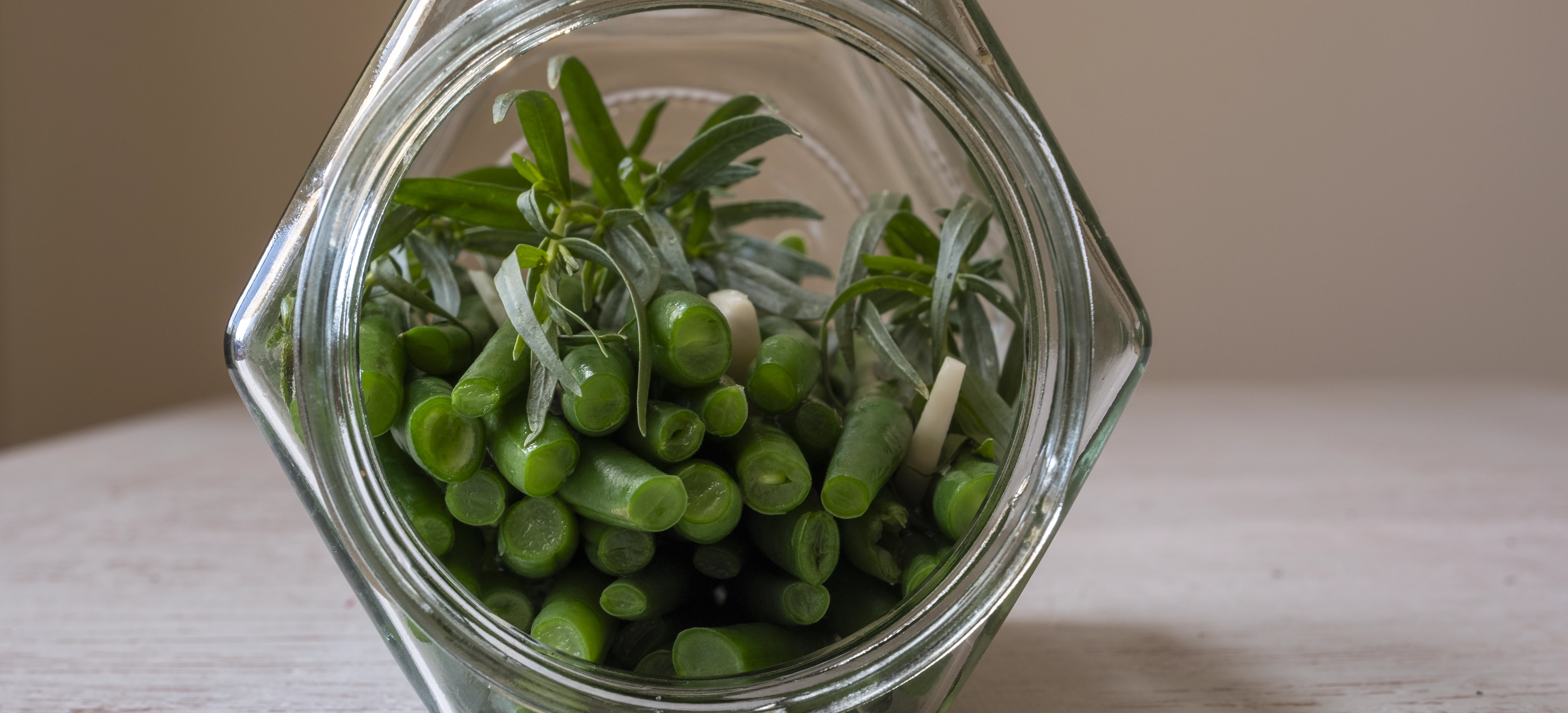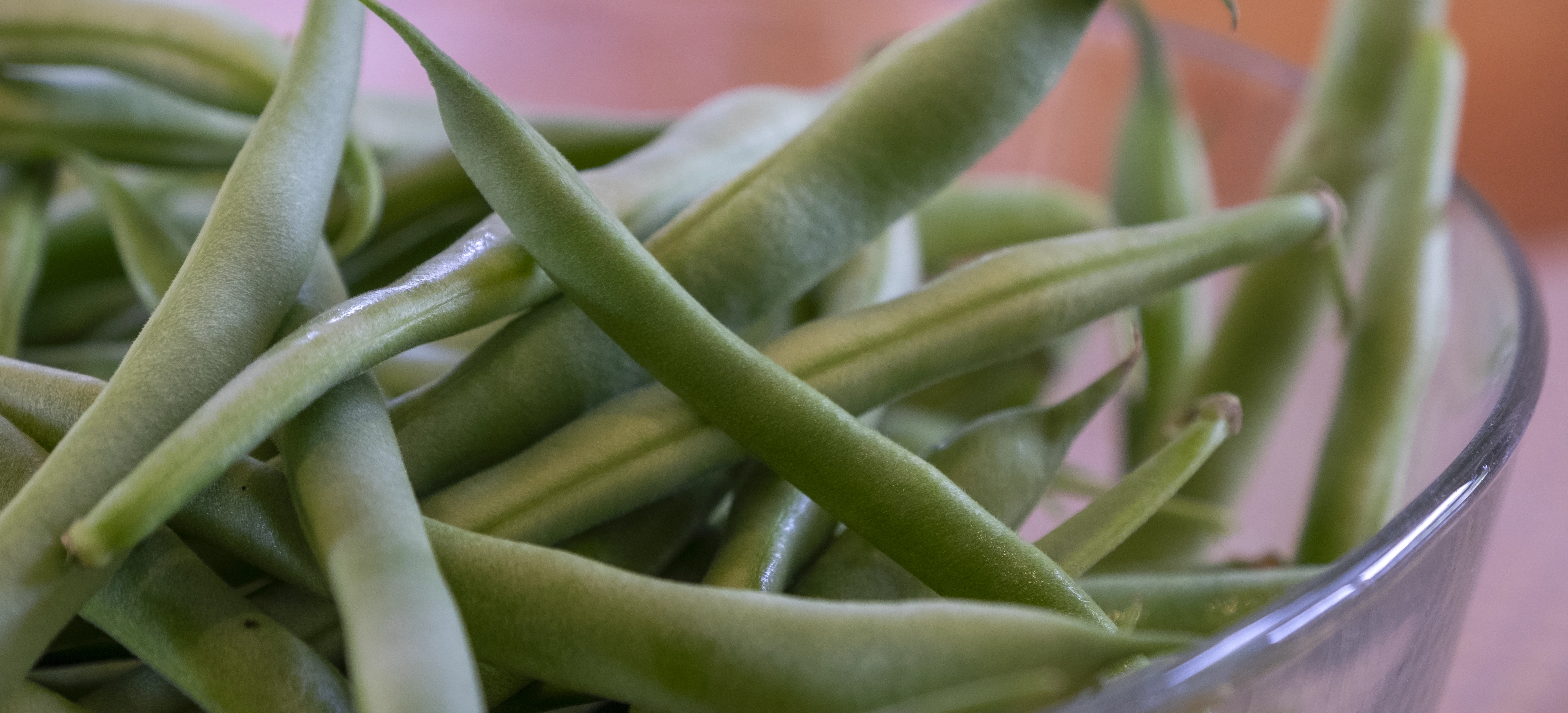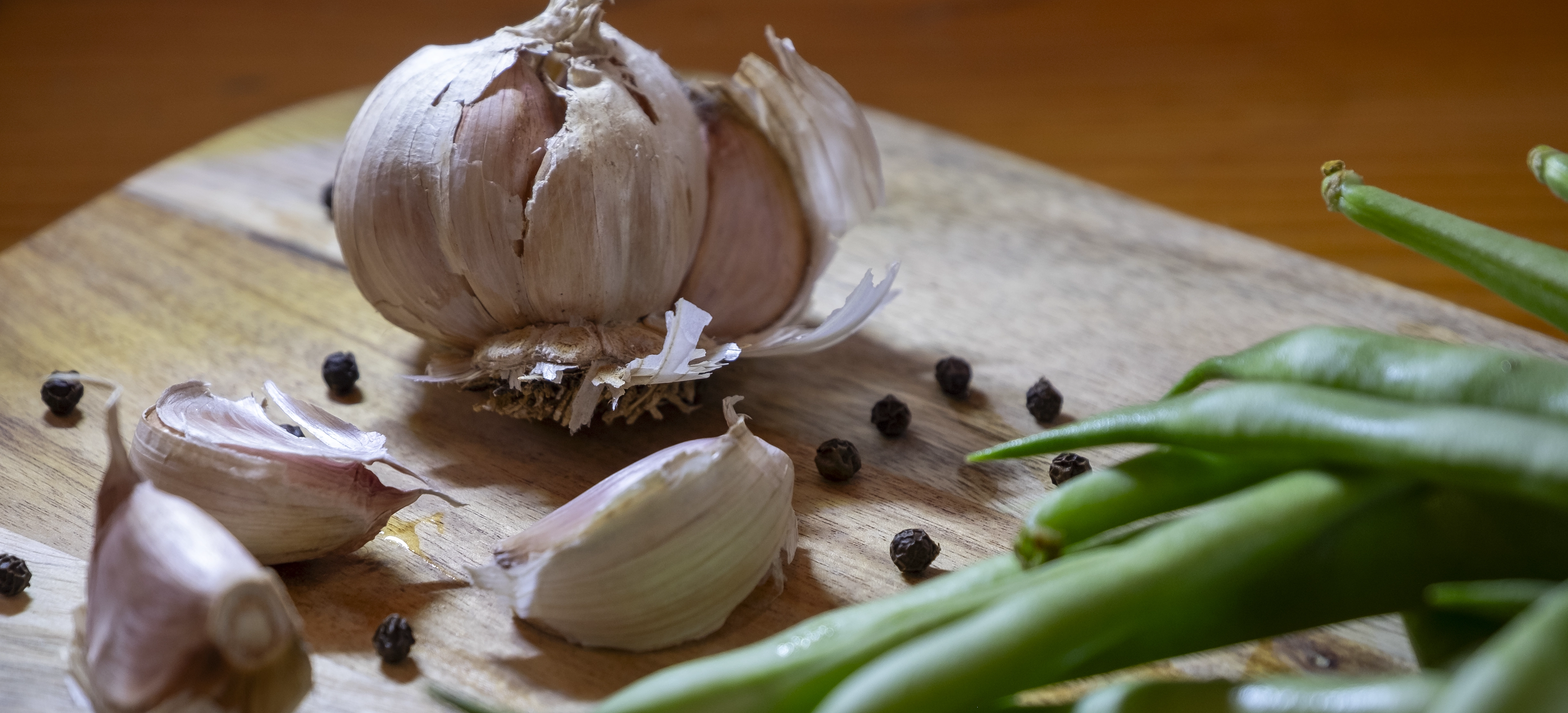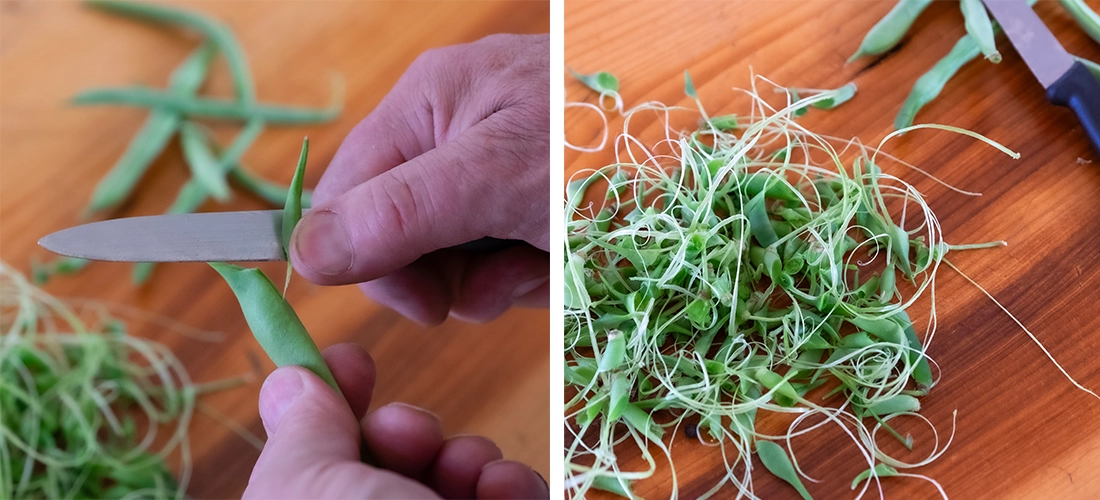Pickled Green Bean with Tarragon
- Pickles, Chutney, Relish & Sauces

Snapping fresh green beans, crisp and delectable, are a spring time favourite. This recipe of pickled green beans flavoured with the fresh grassy anise flavour of tarragon is a great way to capture the essence of spring’s vegie patch. It’s simple recipe that produces a fantastic result. They will add another dimension to your dip and antipasti platters, a Ploughman’s Lunch, and in combination salads. Brighten you day with some spring time happiness and scatter these pickled beans freely into your meals.
- Preparation Time:
- 20 minutes
- Cooking Time:
- 20 minutes
- Quantity:
- 2 x 700 ml jars
PREPARATION
Sterilise sealable good quality glass jars with non-corrosive sealable lids.

INGREDIENTS
- 500g
- Green beans, fresh
- 18
- Black peppercorns, whole
- 3
- Garlic cloves, peeled
- 4 sprigs
- French Tarragon, fresh
- 300 ml
- Water
- 300 ml
- White wine vinegar
- 21g
- Salt

METHOD
Select small to medium sized good quality green beans. Top and tail and remove any bruised or damaged areas. The beans must be able to stand in the jar leaving approx. 2.5 cm (1 inch) from the top of the jar.
Gently wash and dry the beans and tarragon sprigs on a clean tea towel or absorbent kitchen paper to remove any excess moisture.
Lay the sterilised jars of their side. Layer the beans until the jar is half full. Divide the tarragon sprigs between the jars and place on top of the beans. Place another layer of beans of the tarragon. Stand the jars uprights and divide the black peppercorn and garlic sliced between the jars. Place on a heat resistant surface.
Place the vinegar, water and salt in a stainless-steel pan and bring to the boil to dissolve the salt.
Pour the vinegar mixture over the beans, completely covering the beans and leaving a 1.25 cm (½ inch) headspace at the top of the jar.
Seal, and process in a hot water bath for 5 mins. Refer to the Notes Section: Food Preserving Unit and Stock Pot Method for detailed instructions.
Once the water bath has been completed, remove from the preserving unit/large saucepan and allow to cool.
Dry the jars, label, and store in a cool dark place in the kitchen or pantry. Allow to mature for at least 4 weeks before eating.
After opening, store in the fridge.
NOTES
- Choose fresh young green bean preferably a stringless variety. Top and tail and check to see if they need stringing.
- Good quality jars should be used in all preserving, particularly when they are processed in a hot water bath. Thin jars often cannot withstand the temperatures and may crack either in the bath or on and or after removal. Avoid the disappointment and invest in some good jars from a homewares or preserves outlet. Select jars that have non-reactive lids as the vinegar solution can cause the lids to rust over time.
- The type and colour of the sugar and vinegar used will affect the final colour and flavour of the preserve. Malt vinegar and brown sugar will produce very dark brownish red coloured preserve with a more earthy/molasses background flavour, while white wine vinegar or apple cider and white sugar will produce a fresher and brighter flavour. In this recipe I have chosen a good quality white wine vinegar and white sugar so that the beans remain fresh and bright.
- Take care to only use vinegar which has a 5% minimum acetic acid content. The acetic acid content acts the principal preservative, and any lower quantity will compromise the safety of your preserves. Commercially available vinegar is 5%, however most homemade vinegars do not achieve this level.
- Tarragon (Artemisia dracunculus)
- An aromatic perennial with upright branched stems with long smooth leaves that are harvested for its liquorice flavour. French tarragon can be difficult to purchase, so it’s definitely worth planting some in your herb garden. Russian tarragon is hardier, however from a culinary perspective, it has a pungent and less pleasant flavour than the French variety.
- Types of Salt
- There are many different types of salts on the market, and each has different characteristics.
- Use good quality pickling salt when making pickles and preserves. Many commercial salt brands contain stabilisers and anti-caking agents and often iodide which forms a whitish haze and sediment. These additives and in particular iodine can affect the appearance and taste of pickles and preserves during the maturation and storage period. The ingestion of a cocktail of anti-caking chemicals such as calcium silicate, sodium silicoaluminate, tricalcium phosphate, magnesium carbonate, silicon dioxide and yellow prussate of soda, is also unnecessary. Read the label before buying and look for salt that is free from any artificial additives. My favourite salt is Olsson Cooking Salt. No commercial benefit is received from Olsson Salt.
- Lite Salt may be used in quick pickle recipes; however, it may result in a slightly different taste than expected.
- The natural calcium and magnesium impurities of unrefined sea salt helps to cross link and reinforce the cell wall pectin’s, creating a crisp pickle
- Food Preserving Unit Method
- Place sealed bottles/jars in Fowlers Preserving Unit or equivalent.
- Cover with water, bring to the boil and hold at gentle boil for 30 minutes.
- Turn off, remove lid, and allow to stand for 5 minutes before removing.
- Using the tap on the preserving unit draw off some of the hot water. Reduce to a level that is sufficiently below the bottles to be able to safely remove them without scalding yourself.
- Remove from hot water bath and place on a board and rest overnight. A vacuum will form inside each jar and as it cools, it will draw down the lid and create a secure seal.
- Stock Pot Method
- Line a large stock pot with some sheets of newspaper or a cut-down cake rack. Place the bottles on the newspaper or rack, in the pot, allowing space between each bottle so they do not touch. This lining will protect the bottles from direct heat and help prevent cracking.
- Cover the preserves with water which is the same temperature as the preserves. Bring to the boil and hold at gentle boil for 30 minutes.
- Turn off, remove lid, and allow to stand for 5 minutes before removing.
- If possible, remove some of the hot water so the level is sufficiently below the bottles to be able to safely remove them without scalding yourself.
- Remove from hot water bath and place on a board and rest overnight. A vacuum will form inside each jar and as it cools, it will draw down the lid and create a secure seal.
 Removing the strings from fresh beans
Removing the strings from fresh beans
